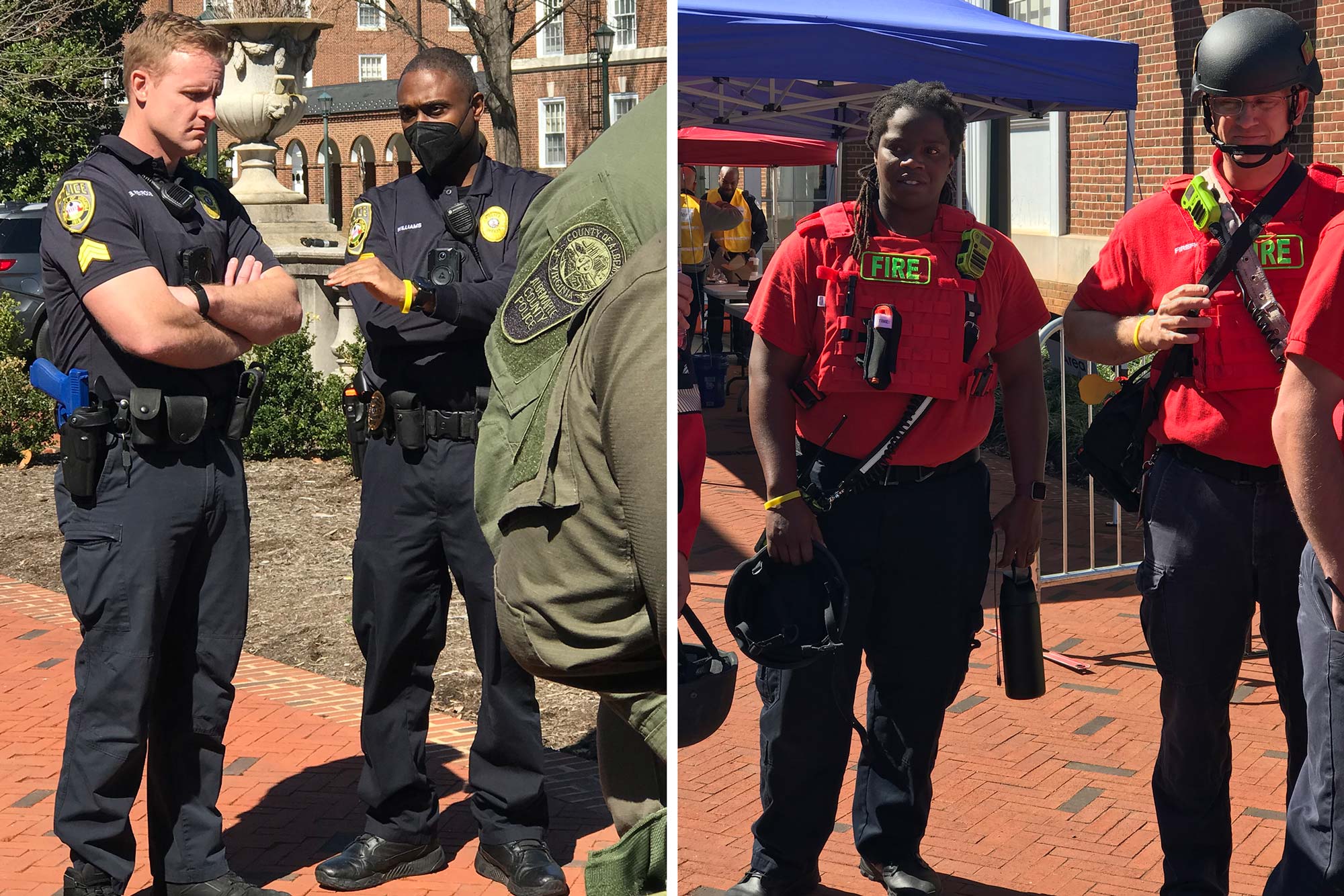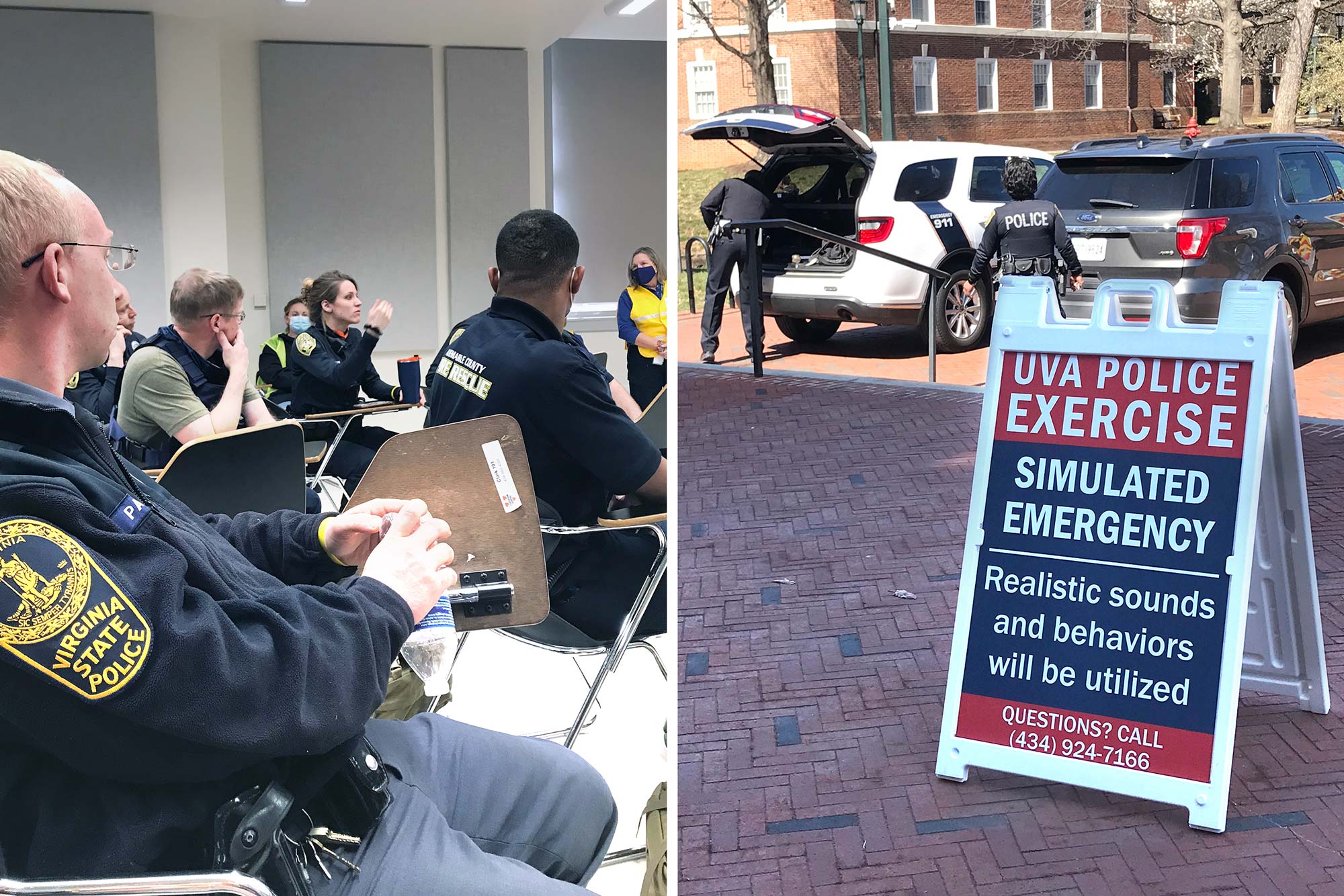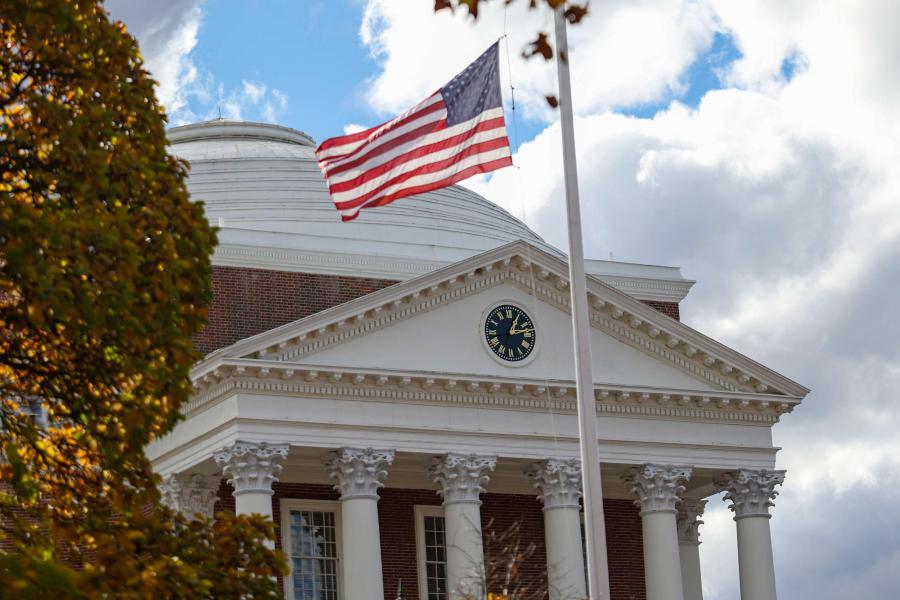On a chilly March morning during spring break, dozens of first responders gathered outside the University of Virginia’s John W. Warner Hall for a day of active threat training.
As they waited, cracking sounds were heard inside. The voice on the police radio announced, “This is an exercise.” In small groups, UVA Police along with their regional law enforcement partners and red-vested volunteer “evaluators” quickly entered the building as though responding to an active attacker.
Officials designed this “Regional Critical Incident Exercise” to strengthen the University’s ability to respond to a complex active attacker incident in coordination with local first responders. UVA’s Office of Emergency Management, in collaboration with University Police Department and the Virginia Department of Emergency Management, took six months to plan the exercise.
“We have to be prepared for this kind of event,” Associate Vice President of Safety and Security and Chief of Police Tim Longo said. On a normal academic day, the University Police Department is responsible for the safety of as many as 50,000 students, faculty, staff, patients and visitors on Grounds.
The spring break training exercise included first responders from University Police, Albemarle Police, Albemarle County Fire and Rescue, Charlottesville Police, Charlottesville Fire Department and Virginia State Police. Experienced observers and evaluators from the University and city, county, state and federal agencies also participated. Altogether, the exercise involved more than 55 law enforcement, fire and emergency medical professionals; 30 support staff; and 21 citizens who volunteered to role-play “victims.”

Left: UVA Police Sgts. Ben Rexrode, left, and T.C. Williams talk strategy. Right: Responders from the city fire department also participated.
Although every probationary officer in the police academy learns how to locate and defuse an active threat, repeated training is necessary to keep these skills sharp. The Regional Critical Incident Exercise provided back-to-back drills for entering a high-stress environment and neutralizing an active threat. After each drill, the police proceeded to a classroom in Clark Hall for a facilitated discussion about what went well and what needed improvement.
“Today is about making mistakes, learning and getting better,” Gene Stewart, chief regional coordinator at the Virginia Department of Emergency Management, said.
Why a Regional Response?
When a large critical incident happens at UVA, it also happens for regional and state law enforcement as well as fire and rescue agencies. This ripple effect is because city, county and University police forces maintain mutual aid agreements to share resources and expertise. These agreements enable small police departments to quickly expand their force in times of natural disaster, critical incidents and high-threat situations. Neighboring jurisdictions could potentially answer active threat calls on Grounds, and vice versa.
In fact, just a week prior to this exercise, University and Charlottesville Police apprehended an armed suspect on Grounds who was subsequently charged with several crimes. The incident ended peacefully following a quick, multi-agency response.
“You can put a multi-jurisdictional plan on paper, but the proof is in the implementation,” UVA Police Sgt. Ben Rexrode said. “In a regional exercise, we simulate the possibility of responding to an active attack and looking at the person on our left and on our right, whom we may not know, but have to work with.”
Yearlong Active Threat Scenario Training at UVA
This exercise was part of a yearlong series at UVA to train individuals and groups who would be involved in responding to an active threat on Grounds.
“By using a consistent active threat scenario across all our training over 12 months, each facet of the response to an active threat on Grounds will have had the opportunity to train for this particular response,” John DeSilva, director of UVA’s Office of Emergency Management, said. “We take the results and feedback from each exercise and use that information to guide further training opportunities and modifications to our procedures. It’s the day that you never want to come, but we are methodically preparing for it.”










